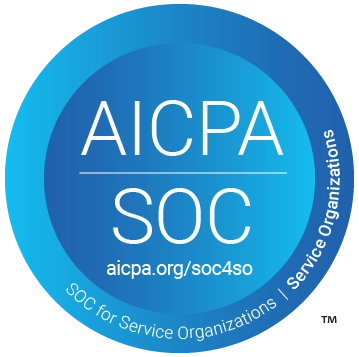Log In to My PreK-12 Platform


GEN COMBO LL PRECALCULUS; ALEKS 360 18W ACCESS CARD PRECALCULUS, 1st Edition
Format Options:
Hardcopy
Complete text bound in hardcover or softcover
Shipping Options
- Standard
- Next-day air
- 2nd-day air
Orders within the United States are shipped via FedEx or UPS Ground. For shipments to locations outside of the U.S., only standard shipping is available. All shipping options assume the product is available and that processing an order takes 24 to 48 hours prior to shipping.
* The estimated amount of time this product will be on the market is based on a number of factors, including faculty input to instructional design and the prior revision cycle and updates to academic research-which typically results in a revision cycle ranging from every two to four years for this product. Pricing subject to change at any time.
Instructor Information
Quick Actions (Only for Validated Instructor Accounts):
Julie Miller wrote her developmental math series because students were coming into her Precalculus course underprepared. They weren’t mathematically mature enough to understand the concepts of math nor were they fully engaged with the material. She began her developmental mathematics offerings with intermediate algebra to help bridge that gap. The Precalculus series is a carefully constructed end to that bridge that uses the highly effective pedagogical features from her fastest growing developmental math series. What sets Julie Miller’s series apart is that it addresses course issues through an author-created digital package that maintains a consistent voice and notation throughout the program. This consistency--in videos, PowerPoints, Lecture Notes, and Group Activities--coupled with the power of ALEKS and Connect Hosted by ALEKS, ensures that students master the skills necessary to be successful in Precalculus and can carry them through to the calculus sequence.
Precalculus © 2017
Chapter R: Review of Prerequisites
Section R.1 Sets and the Real Number Line Section R.2 Exponents and Radicals Section R.3 Polynomials and Factoring Obj 8 Factor Expressions Containing Negative and Rational Exponents Problem Recognition Exercises Simplifying Algebraic Expressions Section R.4 Rational Expressions and More Operations on Radicals Section R.5 Equations Section R.6 Complex Numbers and Equations with Complex Solutions Section R.7 Linear, Compound, and Absolute Value Inequalities Section R.8 Applications of Equations and InequalitiesChapter 1: Functions and Relations
Section 1.1 The Rectangular Coordinate System and Graphing Utilities Section 1.2 Circles Section 1.3 Functions and Relations Section 1.4 Linear Equations in Two Variables and Linear Functions Section 1.5 Applications of Linear Equations and Modeling Problem Recognition Exercises Comparing Graphs of Equations Section 1.6 Transformations of Graphs Section 1.7 Analyzing Graphs of Functions and Piecewise-Defined Functions Section 1.8 Algebra of Functions and Function CompositionChapter 2: Polynomial and Rational Functions
Section 2.1 Quadratic Functions and Applications Section 2.2 Introduction to Polynomial Functions Section 2.3 Division of Polynomials and the Remainder and Factor Theorems Section 2.4 Zeros of Polynomials Section 2.5 Rational Functions Problem Recognition Exercises Polynomial and Rational Functions Section 2.6 Polynomial and Rational Inequalities Problem Recognition Exercises Solving Equations and Inequalities Section 2.7 VariationChapter 3: Exponential and Logarithmic Functions
Section 3.1 Inverse Functions Section 3.2 Exponential Functions Section 3.3 Logarithmic Functions Problem Recognition Exercises Analyzing Functions Section 3.4 Properties of Logarithms Section 3.5 Exponential and Logarithmic Equations Section 3.6 Modeling with Exponential and Logarithmic FunctionsChapter 4: Trigonometric Functions
Section 4.1 Angles and Their Measure and Special Triangles Section 4.2 Trigonometric Functions Defined on the Unit Circle Section 4.3 Trigonometric Functions Defined on Right Triangles Section 4.4 Graphs of the Sine and Cosine Functions Section 4.5 Graphs of Other Trigonometric Functions Problem Recognition Exercises Comparing Graphical Characteristics of Trigonometric Functions Section 4.6 Inverse Trigonometric FunctionsChapter 5: Analytic Trigonometry
Section 5.1 Trigonometric Identities Section 5.2 Sum and Difference Formulas Section 5.3 Double-Angle and Half-Angle Formulas Section 5.4 Product-to-Sum and Sum-to-Product Formulas Section 5.5 Trigonometric EquationsChapter 6: Applications of Trigonometric Functions
Section 6.1 Applications of Right Triangles Section 6.2 The Law of Sines Section 6.3 The Law of Cosines Problem Recognition Exercises Solving Triangles Using a Variety of Tools Section 6.4 Harmonic Motion and Combinations of Trigonometric FunctionsChapter 7: Trigonometry Applied to Rectangular and Polar Coordinate Systems and Vectors
Section 7.1 Polar Coordinates Section 7.2 Graphs of Polar Equations Problem Recognition Exercises Comparing Equations in Polar and Rectangular Form Section 7.3 Complex Numbers in Polar Form Section 7.4 Vectors Section 7.5 Dot ProductChapter 8: Systems of Equations and Inequalities
Section 8.1 Systems of Linear Equations in Two Variables and Applications Section 8.2 Systems of Linear Equations in Three Variables and Applications Section 8.3 Partial Fraction Decomposition Section 8.4 Systems of Nonlinear Equations in Two Variables Section 8.5 Inequalities and Systems of Inequalities in Two Variables Problem Recognition Exercises Equations and Inequalities in Two Variables Section 8.6 Linear ProgrammingChapter 9: Matrices and Determinants and Applications
Section 9.1 Solving Systems of Linear Equations Using Matrices Section 9.2 Inconsistent Systems and Dependent Equations Section 9.3 Operations on Matrices Section 9.4 Inverse Matrices and Matrix Equations Section 9.5 Determinants and Cramer's Rule Problem Recognition Exercises Using Multiple Methods to Solve Systems of Linear EquationsChapter 10: Analytic Geometry
Section 10.1 The Ellipse Section 10.2 The Hyperbola Section 10.3 The Parabola Problem Recognition Exercises Comparing Equations of Conic Sections and the General Equation Section 10.4 Rotation of Axes Section 10.5 Polar Equations of Conics Section 10.6 Plane Curves and Parametric EquationsChapter 11: Sequences, Series, Induction, and Probability
Section 11.1 Sequences and Series Section 11.2 Arithmetic Sequences and Series Section 11.3 Geometric Sequences and Series Problem Recognition Exercises Comparing Arithmetic and Geometric Sequences and Series Section 11.4 Mathematical Induction Section 11.5 The Binomial Theorem Section 11.6 Principles of Counting Section 11.7 Introduction to ProbabilityOnline: Chapter 12: Preview of Calculus
Section 12.1 Introduction to Limits through Tables and Graphs Section 12.2 Algebraic Properties of Limits Problem Recognition Exercises Using a Variety of Methods to Evaluate Limits Section 12.3 Derivatives: The Tangent Problem Section 12.4 Integrals: The Area ProblemOnline: Section A-1 Proof of the Binomial Theorem A-2 Definition of Conics From a Fixed Point and Fixed Line
About the Author
Julie Miller
Julie Miller is from Daytona State College, where she has taught developmental and upper-level mathematics courses for 20 years. Prior to her work at Daytona State College, she worked as a software engineer for General Electric in the area of flight and radar simulation. Julie earned a bachelor of science in applied mathematics from Union College in Schenectady, New York, and a master of science in mathematics from the University of Florida. In addition to this textbook, she has authored several course supplements for college algebra, trigonometry, and precalculus, as well as several short works of fiction and nonfiction for young readers.
My father is a medical researcher, and I got hooked on math and science when I was young and would visit his laboratory. I can remember using graph paper to plot data points for his experiments and doing simple calculations. He would then tell me what the peaks and features in the graph meant in the context of his experiment. I think that applications and hands-on experience made math come alive for me and I’d like to see math come alive for my students.
Need support? We're here to help - Get real-world support and resources every step of the way.

